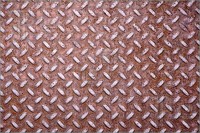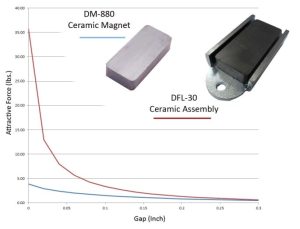It is not uncommon to see distributors of magnets advertise their products at holding values far above what those magnets will reasonably achieve in a real world setting. Why would empirical results be lower than listed holding force values? It may be that the listed force was based on testing completed under the most ideal of conditions. Another possibility is that stated results reflect a calculated value for magnetic pull force. Mathematical calculators, such as our magnetic pull force calculator for Neodymium magnets or our Samarium Cobalt magnet pull force calculator, while being valuable as a tool to determine a first order estimate, don’t accurately account for a number of potential variables that can affect magnetic pull force.
In sizing and selecting magnets and custom magnetic assemblies, it is important to ask a number of questions about the working area in which the magnet will operate. The answers to these questions help deliver a higher level of success in providing a magnet that meets the fit, form, and function of the application. Three areas of concern that we’ll address are: air gap relative to holding force, workpiece conditions, and operating temperature. All of these represent important conditions for the magnet’s ultimate performance.
Magnetic Performance Across an Air Gap
Air gap, defined as the low permeability gap in the flux path of a magnetic circuit, is considered one of the more critical aspects of magnetic circuit design and can greatly affect the performance of a magnet within an application. Examples of low permeability gaps may include: air, paint, aluminum, wood, or basically anything that is not attracted to a magnetic field. Okay – this seems straight forward enough – but why is this so important when integrating a magnet within a design?
The example above illustrates the holding forces of two different magnets; one being a plain ceramic magnet (DM-880) and the other a ceramic magnet assembly (DFL-30). The DFL-30 uses the DM-880 ceramic magnet which is then integrated into a steel channel. This design creates a stronger holding force when in direct contact with the workpiece. The DM-880, without the benefit of the channel, has a significantly lower holding force when measured in direct contact. The prominence of an air gap, as a factor in magnet performance, is demonstrated by how quickly the holding force decays in the DFL-30 assembly and nearly matches the plain DM-880 magnet. Generally speaking, the larger the gap, the greater the reduction in holding force of a magnet.
Workpiece Conditions
 The workpiece situations we’ll discuss in this post are material type, material thickness, and surface condition. Workpieces made from mild steel, as compared to a 400 series stainless steel, will have a higher magnetic permeability, which allows the magnet to function at a more optimal level. Magnetically saturated workpieces, such as lower permeability stainless steels or thin mild steel, are usually undesirable and will result in lower-than-expected holding forces. Various surface conditions, such as paint, mill scale, rust, and less-than-flat surfaces, all create air gaps that detract from holding force. Whenever possible, a clean, flat surface will offer the most ideal working surface.
The workpiece situations we’ll discuss in this post are material type, material thickness, and surface condition. Workpieces made from mild steel, as compared to a 400 series stainless steel, will have a higher magnetic permeability, which allows the magnet to function at a more optimal level. Magnetically saturated workpieces, such as lower permeability stainless steels or thin mild steel, are usually undesirable and will result in lower-than-expected holding forces. Various surface conditions, such as paint, mill scale, rust, and less-than-flat surfaces, all create air gaps that detract from holding force. Whenever possible, a clean, flat surface will offer the most ideal working surface.
Operating Temperature
 Some of the most popular rare earth magnets used today are alloys of Neodymium-Iron Boron. Due to a number of factors, the neodymium magnets are susceptible to degradation in magnetic performance. Magnets operating in high temperatures cause a reduction in holding force in all magnetic alloys; however, there is not a simple approach, nor a single chart, to refer to when assessing magnetic pull force due to high temperatures.
Some of the most popular rare earth magnets used today are alloys of Neodymium-Iron Boron. Due to a number of factors, the neodymium magnets are susceptible to degradation in magnetic performance. Magnets operating in high temperatures cause a reduction in holding force in all magnetic alloys; however, there is not a simple approach, nor a single chart, to refer to when assessing magnetic pull force due to high temperatures.
The seemingly simple proposition of finding a magnet to meet a certain pull force can quickly become more complicated than expected at the surface. The applications engineers at Dura Magnetics try to make that process less complex for our customers by using our experience and exposure to a vast number of applications. Please contact Dura Magnetics for your next magnet application requirement.

 The workpiece situations we’ll discuss in this post are material type, material thickness, and surface condition. Workpieces made from mild steel, as compared to a 400 series stainless steel, will have a higher
The workpiece situations we’ll discuss in this post are material type, material thickness, and surface condition. Workpieces made from mild steel, as compared to a 400 series stainless steel, will have a higher  Some of the most popular rare earth magnets used today are
Some of the most popular rare earth magnets used today are 